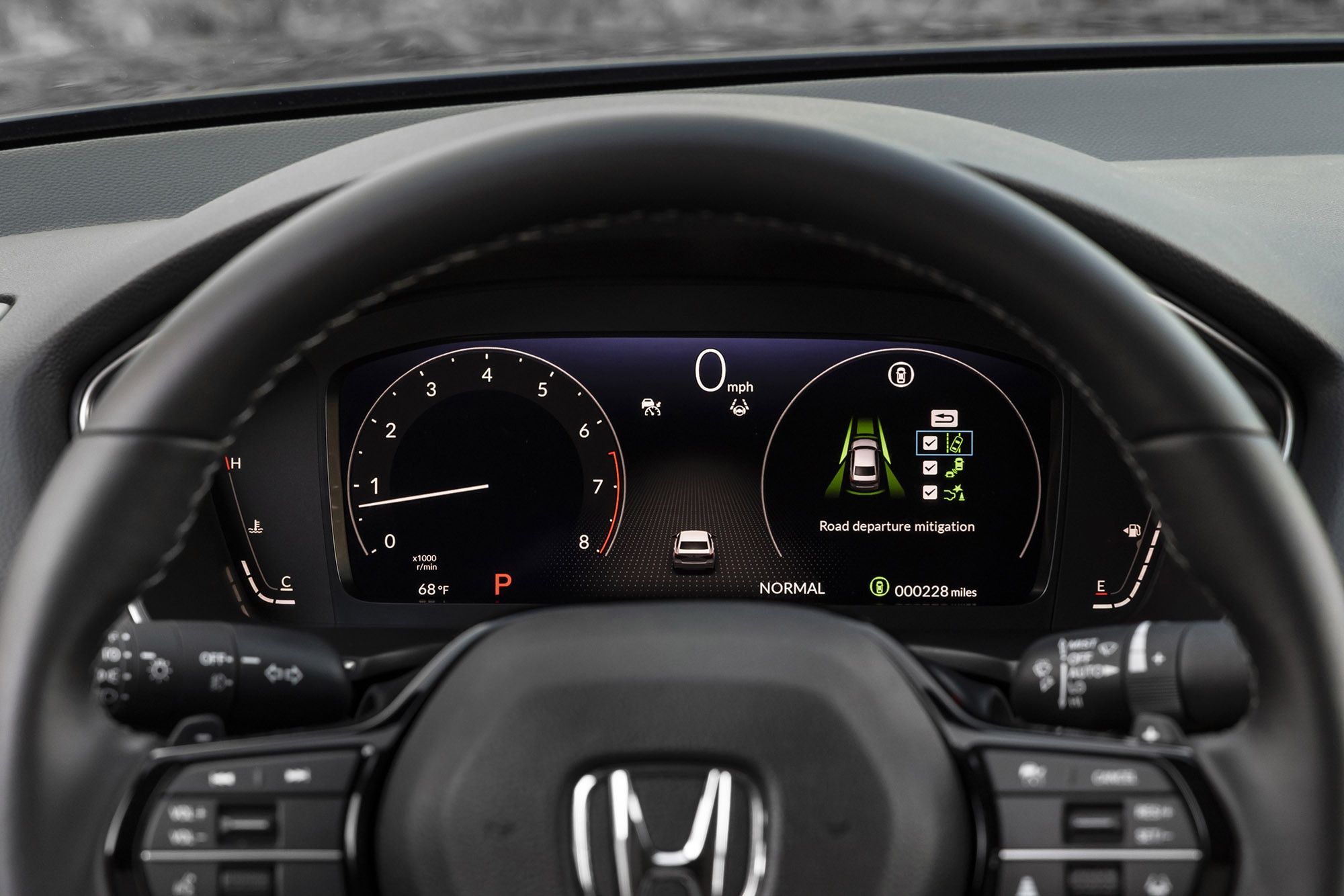5 Things That Have Made Car Interiors Better Over Time
Materials, tech, and safety features have come a long way.
 Honda
Honda
QuickTakes:
When considering your next vehicle purchase, you may find that the interior is an important (maybe the most important) factor in your decision. Automakers these days are putting serious effort into the styling, comfort, and technology of their cars' cabins. Here are five areas where technological and materials advancement have improved the experience of being inside a motor vehicle.
 Honda
Honda
Automakers Have Upped Their Upholstery Selection in Mainstream Models
It used to be that if you wanted copious leather upholstery and wood or metal trim in your car, you were probably looking at a high-end luxury model or top-of-the-line trim levels. Not anymore.
Today, you can find those things in more mainstream models. And even a reasonably priced economy car offers sporty design flourishes. Take the Honda Civic, which went from offering a drab slab of gray dashboard in 1997 to featuring brushed-metallic accents and sports-car styling in the 2023 model.
With cars on the road longer than ever before — the average vehicle age in 2018 was nearly 12 years, according to research company IHS Markit — these stylish interiors increasingly need to hold up beyond the first few years of vehicle ownership, a goal shared by automotive suppliers working on developing new, even longer-wearing materials.
 Honda
Honda
Digital Instrument and Infotainment Screens Keep You Abreast of Important Info
Today's cars can give you all sorts of metrics — from fuel efficiency to tire pressure to when you'll need an oil change — often right from the dashboard. Many modern vehicles have ditched the old-fashioned gauge panel and button-heavy center stack in favor of digital displays.
If you're on a long road trip, you can often see how many miles you have left before you need to refuel. If you're towing a heavy trailer, you might be able to select a mode that shows engine and transmission temperature. These readouts aren't just for satisfying curiosity; they can help keep you safe.
Driving on an underinflated tire, for instance, can accelerate treadwear, hurt your fuel mileage, and potentially lead to a blowout, while an overheating engine can leave you stranded on the side of the road.
 Honda
Honda
In-Dash Touchscreens Keep Your Eyes Up
Car dashboard touchscreens have been around in some form or another since the 1980s, but they really took off in the mid-2000s. Although the presence of touchscreens in vehicles continues to raise questions about driver distraction, 97% of new cars come equipped with some form of screen. Current touchscreens are more intuitive to operate than those of the past, thanks to software and hardware improvements.
Android Auto and Apple CarPlay connectivity, available on many new cars, makes it easier to use your smartphone for navigation, music, and more, without the danger of messing around with your phone while on the go.
Larger screens also help make certain modern safety features possible, such as backup cameras. Data from the Insurance Institute for Highway Safety shows that backup cameras reduce accidents by 17%. In order for the cameras to work, however, they need to send their footage to a screen that the driver can see. Similarly, it can be safer to follow an expandable, well-lit map that's on the dashboard rather than a paper one in your lap.
 Honda
Honda
Advanced Sound Tech Has Made Cabins Super Quiet
In the old days, a serene driving experience often came at a premium — sometimes even Rolls-Royce money. In fact, the legendary English automaker prided itself on its silent interiors: "At 60 miles an hour the loudest noise in this new Rolls-Royce comes from the electric clock," reads one of the company's ads from 1958. Nowadays, though, that kind of quietude is available from mainstream brands. Lists of today's quietest cars and SUVs include relatively affordable models from Honda, Chevrolet, and Kia.
Eliminating noise from the road, the wind, and the engine is no easy feat. Engineers use acoustic cameras and microphones hidden inside human-shaped mannequins to come up with sound-deadening designs.
Some cars go even further, employing active noise cancellation to pick up, analyze, and neutralize unwanted noises by playing carefully calibrated tones through the vehicle's stereo speakers. Serene silence behind the wheel isn't just a luxury; it's a safety feature. Researchers in the science journal PLoS One said the constant din of a loud vehicle can make drivers drowsy and decrease their reaction times.
 Honda
Honda
Cabins Now Contain a Mix of Low- and High-Tech Safety Solutions
Perhaps the most important advances in automotive interior design have to do with safety. Front airbags for the driver and front-seat passenger became mandatory in the U.S. for the 1999 model year.
Since then, automakers have added other airbags to protect vehicle occupants' sides, knees, and shoulders. Standard LATCH systems are designed to make it easier to properly install a car seat, which can reduce the risk of fatal injury by up to 71% for infants, according to the National Safety Council.
Drowsy-driver detection can alert you if your attention starts to lag, prompting you to take a break before you risk nodding off at the wheel. And collision-alert systems can warn you when traffic suddenly slows in front of you or when you're about to pull into the path of a crossing vehicle. These are features many people want in a car, even if they hope they never have to use them.



